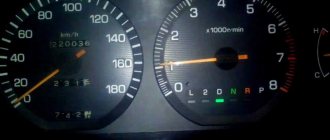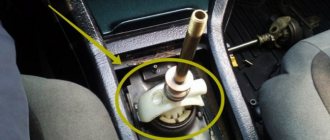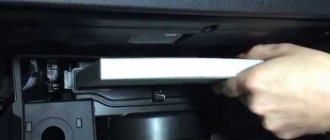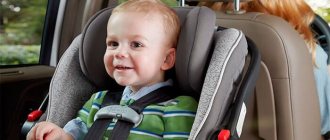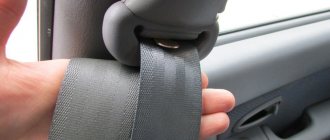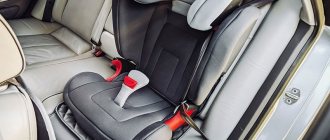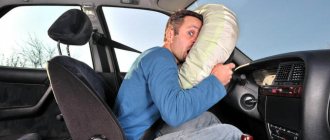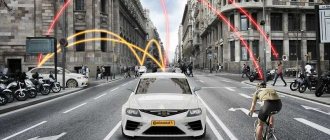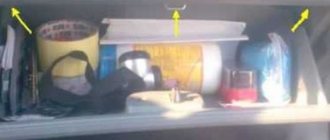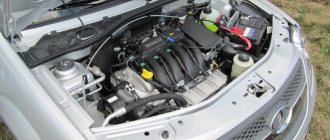How to choose a safe chair?
I recommend focusing on the results of independent crash tests conducted by the largest public organization of motorists in Europe - the German automobile club ADAC. Their methodology is more stringent than that used in tests for certification of child car seats. And on the official ADAC page you can find a lot of useful information, including recall campaigns for some models of child seats and bassinets.
In November 2021, ADAC conducted another test of 18 child car seats. Two of them failed because the materials used in their manufacture contained too many harmful substances. And the safest in the event of a frontal and side impact, according to German experts, was the BeSafe iZi Kid X3 i-Size seat (for children from 1 to 4 years old). This model has the best safety rating in the history of tests since 2015. It is not surprising that such a chair is very expensive (more than 40,000 rubles at the time of publication). Test results are here. You can also choose a more affordable model there. Most of the chairs tested by German experts are officially presented on our market.
Classification
When choosing and installing seats, you need to start from the weight classification, which is considered generally accepted in Russia and Europe.
There are several groups:
- Zero or group 0. These are chairs for newborns whose weight is no more than 10 kilograms and whose age does not exceed 6 months. A prerequisite for them is to be placed sideways in the direction of traffic;
- Car seat group 0+. Here children are up to 13 kilograms and no older than one year. Mounted frontally against the movement of the car;
- First group. This includes car seats for children whose weight ranges from 9-18 kilograms and whose age ranges from 9 months to 4 years. Place your face in the direction of the car;
- Second group. Includes small passengers weighing from 15 to 25 kilograms and ages from 3 to 7 years. They are also placed facing the direction of travel;
- Third group. These are the oldest, weighing from 22 to 36 kg and age from 6 to 12 years. Install as in the case of the second group.
Based on this classification, you will know exactly which car seat to buy for your child in the weight range of 9-36 kg.
Don't worry if you don't have seat belts. You can, and sometimes need to, secure your child with the straps that come with the chair you purchased.
As for the chairs themselves, it is worth highlighting brands like Babyton, Zlatek, Rant, Infiniti or Mishutka. Focus on your taste and financial capabilities.
But do rear-facing seats have any disadvantages?
Unfortunately, there is. Statistically, the second row of a car is safer than the first. The reasons are obvious. The problem is that when you're driving and your child is sitting rear-facing in the second row, you can hardly see him.
and you don’t know whether he fell asleep or not, whether he’s trying to get out of the seat belts.
In addition, the child himself does not see adults
- this can scare him.
Maria Meshalkina
(@meshmarusya), child neuropsychologist, teacher at the Moscow Institute of Psychoanalysis, author of seminars for parents and specialists:
“
Infants are actually carried rear-facing, because the muscles of the body, including those around the spine, only become strong enough by the age of one year, including for the child to be able to walk independently.
Plus, the baby is just beginning to understand his surroundings; for now, toys, food and his mother are enough for him. After one year of age, children find it more comfortable to ride in a car facing forward because they can see everyone who is riding in the car and the road ahead. This is especially true on a long journey. At the same time, it is easier to distract the child and keep him occupied with something: show what is outside the window, play with toys, sing songs or tell fairy tales. Another important point is that a child, especially under the age of 3, needs to see his parents to feel safe. The child always focuses on the parent; if the mother is calm, then the child perceives what is happening around him without anxiety or concern. There is a way out of any situation. In this case there are even two of them. The first is to purchase an inexpensive accessory (AliExpress has it) in the form of a mirror that attaches to the rear headrest. You will see a child in it, you just have to turn around.
The mirror is attached to the headrest of the second row of seats using belts. Such an accessory from a well-known online market will cost 500–700 rubles.
The mirror is attached to the headrest of the second row of seats using belts. Such an accessory from a well-known online market will cost 500–700 rubles.
Another option is to install the seat in the front passenger seat. Just remember to turn off the front airbag, as required by the instructions.
Another drawback is that it is not always convenient to seat a child in a rear-facing seat.
Not enough space. Therefore, I recommend considering purchasing a car seat with a 90° swivel function. Such models are usually more expensive, but they are more convenient to use.
The photo shows the Maxi-Cosi AxisFix Plus model with a rotating mechanism that makes it easier to get the child in and out.
The photo shows the Maxi-Cosi AxisFix Plus model with a rotating mechanism that makes it easier to get the child in and out.
Group 0+ - we travel in a child car seat from birth:
A small child should ride in a rear-facing child car seat. Everyone seems to have already learned this truism. Well, or almost everything. Or rather, not all of them. It’s hard to say how many times I’ve seen a child in a group 0+ seat that they managed to install in the direction of travel of the car! But still, such people are an overwhelming minority. And the arguments of such “responsible” parents, as a rule, are “it’s more convenient for the child,” “the child sees better this way,” “this is how he looks at his mother,” etc.
So, a child car seat is a safety device, not a decoration in a car. And it is babies who are most vulnerable in a car. That is why, according to the World Health Association, the use of child seats in infancy reduces mortality by 71%!!!! But we are talking about correctly installed child car seats!
At this age, the cervical spine is very poorly formed, and the mass of the head in relation to the mass of the body is very large. Therefore, it is IMPOSSIBLE to place a child of group 0+ in the direction of travel in the car under ANY EVENT! This is fraught with injury even during sudden braking, not to mention a serious accident. And simply the load in this position is distributed evenly over the child’s body, minimizing the load on the still very weak spine.
And the same applies to 7-8 month old babies, even if they weigh more than 9 kg, which formally marks the beginning of group 1. And the fact that they already know how to sit on their own does not matter. If it doesn’t fit into the cradle, we take group 0+/1.
CONCLUSION: from birth and a MINIMUM of 9 MONTHS AND a MINIMUM of 9 kg of weight - ONLY AGAINST THE CAR.
How to understand that a child has outgrown such a chair?
Many parents find it uncomfortable for their child to sit in a rear-facing seat due to limited legroom. Keep in mind that the baby's skeleton is not yet formed. Children can sit comfortably in positions that adults find uncomfortable. As long as the child meets the height and weight parameters of the car seat, there is nothing to worry about: he is safe and comfortable.
However, there are a couple of general guidelines that can help you determine if your child has outgrown a rear-facing seat:
- The distance from the child's head to the top edge of the plastic frame (not the soft covering) is less than 2.5 cm.
- The child's legs rest against the back of a regular car seat.
If your child has grown out of a rear-facing seat, the seat cannot simply be turned forward (some seat models can be installed in both positions). You should purchase a chair that is suitable for the child’s height and weight.
How should you transport your child: facing forward or backward?
Is it difficult to install a car seat in a car?
Almost all manufacturers of modern children's car seats supply, complete with products of their own production, a number of useful and necessary items for the reliable installation of seats: all kinds of belts, fastenings, stands and similar accessories.
Of course, all tools and accessories must be accompanied by instructions for assembling and installing a child car seat, as well as instructions for its correct use. Consequently, even the average person should not have any difficulties in using such a simple device as a child car seat.
Before installation: chair type
First of all, make sure that your child car seat is appropriate for the age category and body weight of the baby. The chairs are conventionally divided into several subgroups. The main differences between them are in the types of fastening (main and additional), as well as the design of the chair body. In addition, the location of its required attachment also depends on the type of chair. The following groups of seats are distinguished:
- Group "0+". The seats in this group are intended for the smallest passengers weighing no more than 13 kilograms. Such chairs are usually equipped with several fastening systems and additional support supports.
- Group "1". Seats of the first group are used for passengers aged from 1 to 4 years with a body weight from 9 to 17-20 kilograms.
- Universal group. Chairs of this format can be used to transport children for many years. They are suitable for children weighing from 9 to 35 kg. The peculiarity is that these devices are equipped with an expanded system for adjusting the design to suit the child’s growth. The tilt angle can also be adjusted separately.
- Group "2/3". Used exclusively for older children weighing from 18 to 35 kg.
Once you are convinced that it is appropriate to use a particular chair, you can begin installation. At this stage, it is important to note one nuance: group “0+” seats are installed exclusively facing the direction of the vehicle. This is due to safety precautions and recommendations of each manufacturer. The child in such chairs is located in a lying position. Starting from group “1”, a small passenger can sit in a child car seat. The seats of groups “1”, “2/3” and the universal group can be freely installed by the person facing the movement of the car.
Chair installation location
Despite the common stereotype, installing a child car seat in the front seat is quite normal. However, you should take into account the presence of an airbag in a number of modern cars. Deploying an airbag in an emergency can harm a child. It follows that the pillow must either be absent or intentionally disabled. In this case, there is no need to worry about the child’s safety: special child car seat belts securely fix it inside the seat, and the strong sides of the body will protect it from impacts and splinters on the sides.
A more common location for a child seat is the back seat of a car. Here it is worth paying special attention to the location. The most successful position is considered to be the “middle” passenger, i.e. in the center of the rear seat. This position minimizes the risk of injury to a child when hitting the side of the car (during an accident). Although the walls of child seats are in most cases extremely strong, this does not provide a complete guarantee of protection from any injuries.
Also, a relatively safe position in the back seat is considered to be the place on the right. The risk of injury from shrapnel is minimal; only one vulnerability remains - proximity to the doors (body) of the car. At the same time, there are a number of advantages:
- it is convenient to monitor the child when he is on the right hand;
- The front passenger seat can be easily moved back to provide additional space.
The last point is very important. It also plays a significant role in ensuring transportation safety. Many people believe that it is much safer to secure the child seat with the front passenger seat, pushing it as far back as possible. This is not at all true, because if the child seat is securely fastened, additional fastening at the front is not necessary. Moreover, the proximity of the passenger seat can cause various injuries to a child, even during normal driving.
In extreme situations, with a sharp need for fixation, you can use special supports for child seats. They are produced by the same manufacturers (as a rule, these are manufacturers of goods for children), and often come complete with the main product.
